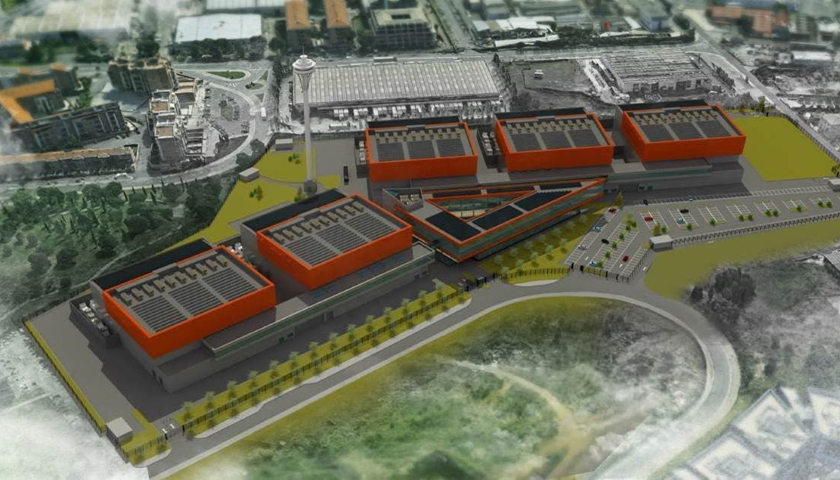Italian cloud and hosting provider Aruba has announced a new completion date for its delayed Rome data center.
The company announced this week that its Hyper Cloud Data Center (IT4) currently being constructed in Rome will be completed in the first quarter of 2023. The campus is set to be the largest data center in Italy’s capital.
Sat within a fully-owned 74,000 sqm (796,500 sq ft) site in Tecnopolo Tiburtino (East Rome), the campus will consist of five independent 6MW data centers, totaling 30MW with 2N redundancy at full build-out.
The site will use energy produced from 100 percent renewable sources, certified at the European level through Guarantee of Origin (GO Certification) and self-produced on-site thanks to the presence of photovoltaic systems and the use of free cooling.
“Tapping into the latest technologies to improve sustainability is a priority for the entire data center industry. The work on our new hub in Rome is helping guide this priority, further consolidating us as one of the top European providers of enterprise-grade IT services as well as an operator of the most modern and environmentally friendly data center network in Italy” said Alessandro Bruschini, Head of Infrastructure at Aruba. “The Hyper Cloud Data Center will work in close synergy with the entire Aruba data center network and help expand our presence and enhance our connectivity in key European regions.”
The facility was first announced in mid-2018 and was expected to be completed by Spring 2020 and was originally billed as potentially reaching up to 66MW. At the time of the original announcement, Aruba said the project would require an investment of around €300 million over the course of five years.
Founded in 1994, Aruba operates three data centers in Italy and four live in total; one in Milan/Bergamo, two in Arezzo, and one in Ktiš in Czechia/Czech Republic.
Stock exchange company Euronext recently migrated from a UK data center outside London to an Aruba facility outside Milan, citing the regulatory uncertainty of Brexit as one of the reasons for the move.
Source: datacenterdynamics.com





